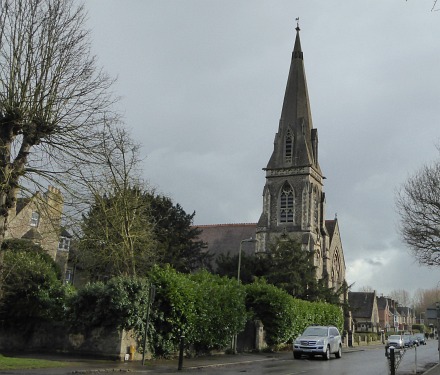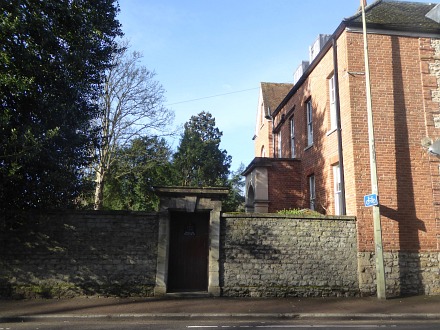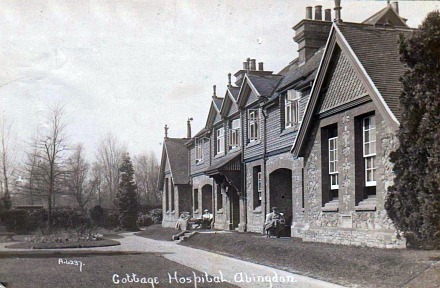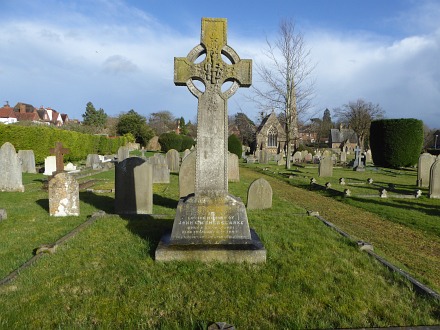John Creemer Clarke was a clothing manufacturer in Abingdon who went on to become Mayor of Abingdon from 1869-1870 and MP for Abingdon from 1874-1885. He was somebody who paid for some important Abingdon community buildings.

Trinity Church was built in 1875 thanks to his generosity, and was once called Clarke’s Chapel.

He lived at Waste Court, now part of Abingdon School.

He also paid for the Cottage Hospital to be built on Bath Street, nearby in 1885. As at Trinity four foundation stones were laid, and inscribed by people close to him.
The ground floor of the hospital contained two large, and two small wards, and a dispensary. Upstairs there was a convalescent room. There was also a south facing lawn where patients could sit out and convalesce. Back then the hospital would have been supported by voluntary contributions, and the Abingdon Herald listed every week who had given what in the way of help. ‘Abingdon Cottage Hospital thank Mrs Budgett for eggs, Mrs Hathaway for cakes & magazines, & Mr Townsend for illustrated papers.’
The Cottage Hospital was where Mercers’ Court, part of Abingdon School now stands – off Bath Street where you can see through railings and arches to a fountain.

John Creemer Clarke’s final stone monument is in the Old Cemetery in Abingdon and is dated 1895. It has the inscription ‘The memory of the just is blessed’.
It is a large monument with surrounding kerbstones, on which there are several inscriptions to family members, the most recent in the 1970s. I wonder whether he still has relatives living in Abingdon.
Small typo in the date of Trinity Church’s construction!Otherwise a really interesting article about an important benefactor to Victorian Abingdon and someone of whom I previously had no knowledge – despite having attended Trinity regularly and seen the foundation stone.
Having left Abingdon over 53 years ago, I have read your Blog daily for several years since I discovered it, to see how the town has changed and how it has stayed the same.
Another interesting blog article, thanks Backstreeter.
Does anyone who where his clothing company was sited and exactly what sort of clothing it made?
Hi Lema, I believe it was at the lower end of West Saint Helens st? Just town side of the cemetery? There was a large, old building there that st one point caught fire (backstreeter I think there is a well known phot of that event?) I think it later became the MG factory social club affectionately known as the Honkey Tonk,
Also I think the large building (now flats) between the grave yard and St Helens Mill was Clarks glove factory?
Auntie, now 96, recalls the rage old Mrs Clark went into when one of their workers ( a friend ) announced she was going to marry an immigrant ! Threatened her with her job if she went ahead, she did though !
My gt grandfather was Landlord of the Britannia inn west st Helens before and during the war. I believe it was him that rented a disused part of the carpet factory behind and opened it up as a honkey tonk to attract the American soldiers and of course the local girls. Some colourful events went on in there by all accounts.
Capt K is right about the location. Abingdon Past and Present (available in the library or bookshops) has an OS map of West St Helen St in P.38 showing the massive clothing factory and the densely populated “courts” next to it. There is a photo on P.40 but it doesn’t really show the tall chimney which features in other pictures such as the Francis Frith one (can be found in Google images) taken in 1900. The factory employed over 2000 people and burned down in c.1945 I think.
I read somewhere that he was mocked as MP because he had a regional accent (not sure that would have bothered him)
Berkshire born berkshire bred, strong in the arms thick in the head
Or
I can’t read I can’t write but I can drive a tractor.
Maybe
I remember reading somewhere that during the war MG stored stuff in the basement of the factory (presumably to free up space in their own premises for the war effort), all of which were destroyed in the fire, the intensity of which was such that the unique aluminium land speed record engine amongst the items was said to have melted.